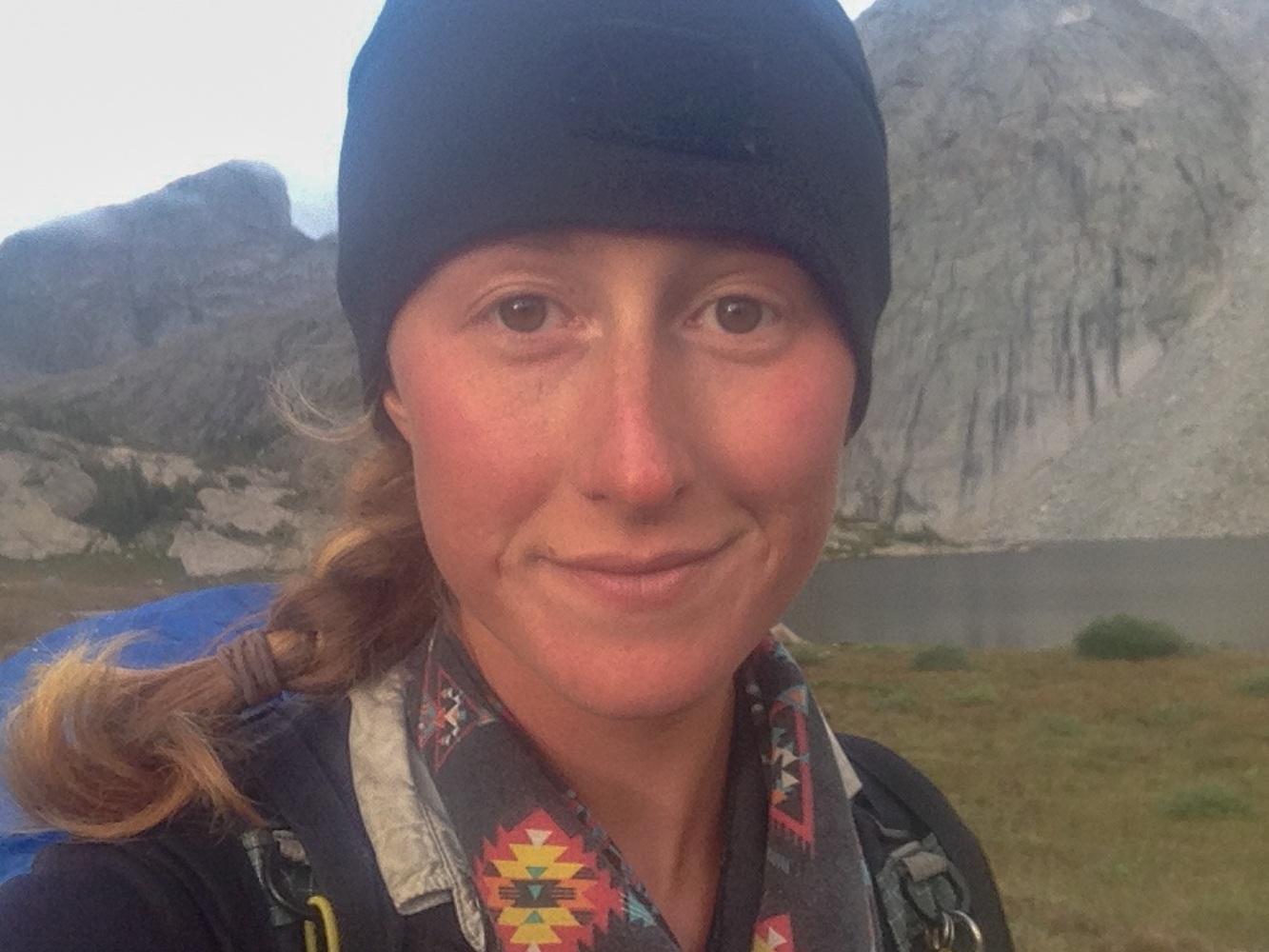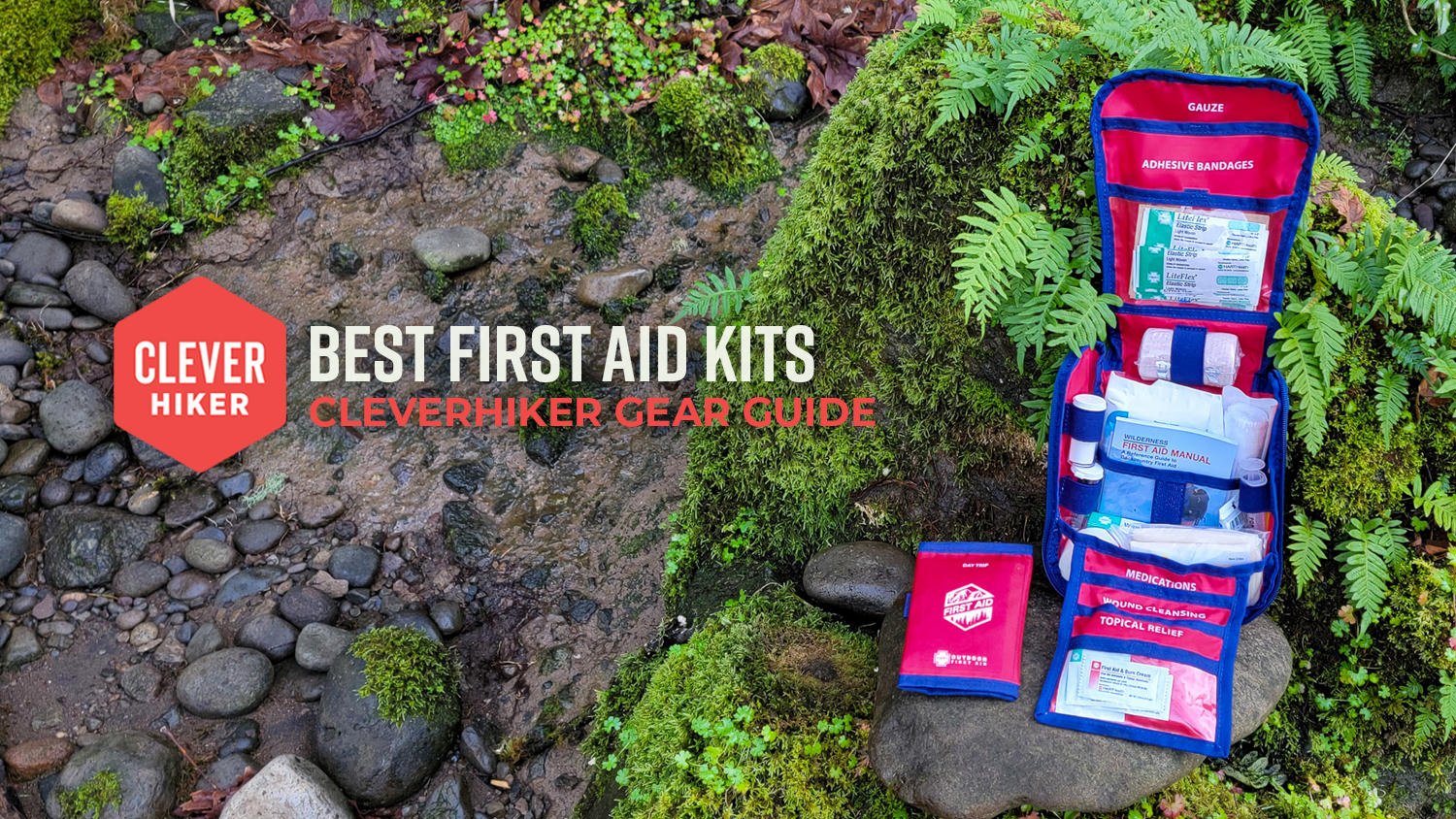
Best First Aid Kits for Hiking of 2023
We never venture into the wilderness without at least a basic first aid kit. A small selection of supplies and some know-how will help you manage injuries or illnesses that crop up on the trail with confidence, so you can go further and stay out longer.
Being prepared means more than just carrying a big, bulky kit in case something happens though. True self-reliance in the backcountry means staying aware of your body and surroundings, taking preventative measures, and having the ability to improvise if things take a turn for the worse.
After decades of backpacking experience and years working as certified Wilderness First Responders, we’re confident in our ability to help you choose the best first aid kit for your needs.
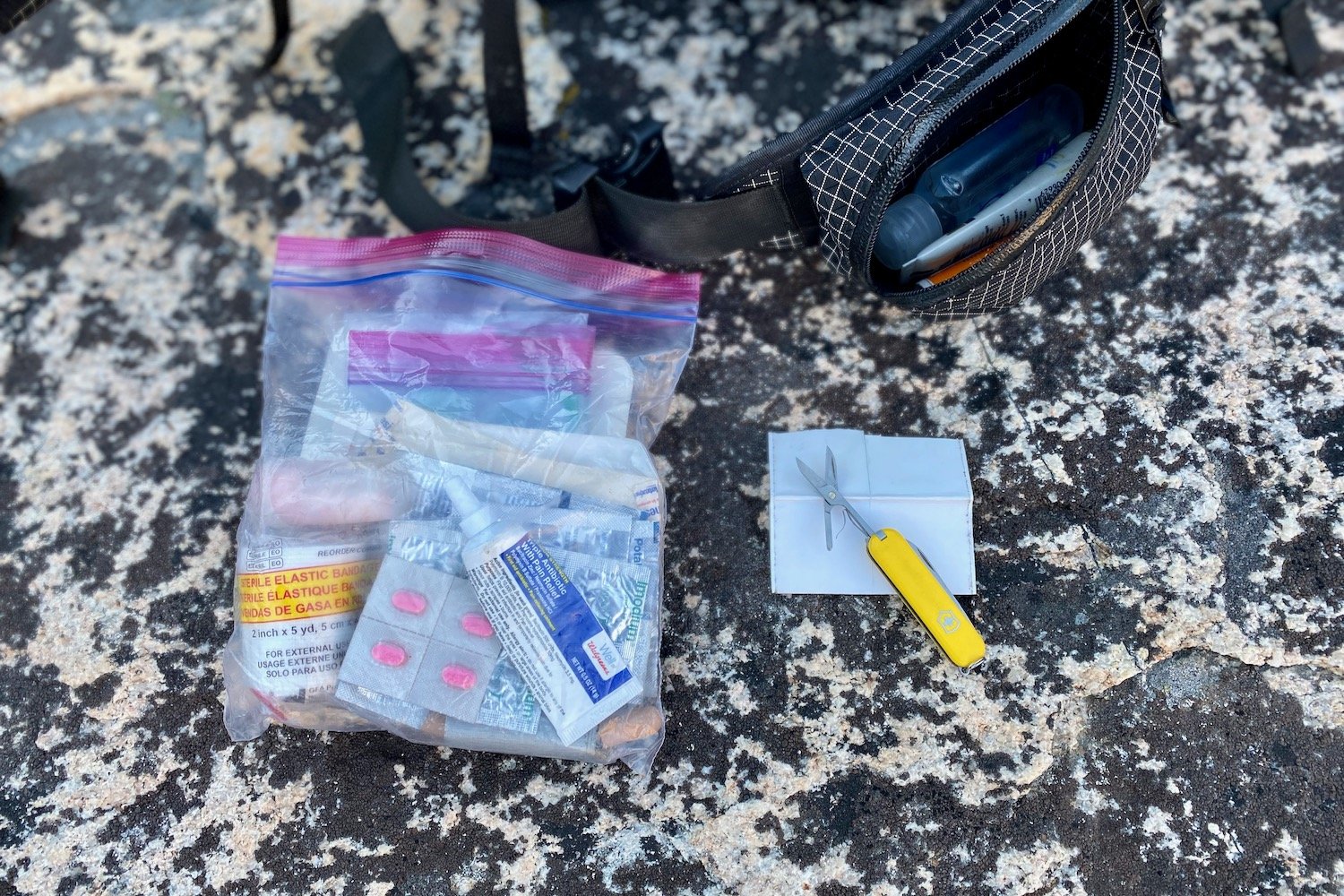
A HOMEMADE FIRST AID KIT AND A SWISS ARMY CLASSIC MULTITOOL IS WHAT YOU’LL FIND IN OUR PACKS ON MOST BACKCOUNTRY TRIPS
Quick Recommendations
Check out this quick list of our favorites if you’re in a hurry, or continue scrolling to see our full list with in-depth reviews.
- Best first aid kit overall for weight, price & quality: AMK Ultralight/Watertight .7
- Most compact first aid kit: HART Day Hike
- Well-rounded with a thorough first aid guidebook: AMK Hiker
- Best budget first aid kit: General Medi Mini
- Best first aid kit for groups: HART Extended
- Organized & durable first aid kit: Surviveware Small
- High-quality cut & scrape kits for everyday use: Welly Excursion & Quick Fix
- Custom DIY first aid kit

THE SURVIVEWARE SMALL FIRST AID KIT IS HIGH-QUALITY, DURABLE, AND VERY WELL ORGANIZED
What’s Most Important to You in a First Aid Kit?
PRICE/VALUE – The cost of first aid supplies really adds up if you’re building a kit from scratch since you have to buy everything in relatively large quantities. We found that it’s much more affordable (at least in the short term) to buy a pre-made first aid kit because it provides a variety of supplies in smaller quantities. We consider all of the following kits to be an excellent value, though some are exceptionally low-cost.
- Best budget first aid kits: HART Day Hike, General Medi Mini & Welly Quick Fix
- Best value first aid kits: AMK Ultralight/Watertight .7, AMK Hiker, HART Extended & Welly Excursion

We love that the AMK Hiker First Aid Kit is organized & labled to make it easy to find what you need
WEIGHT & SIZE – It’s really important to have what you need to be safe and prepared in the backcountry, but you’ll want to balance the weight and size of your kit carefully to keep your pack lightweight. This is especially key if you’ll be traveling a long distance or tackling difficult terrain. An ultralight kit that’s customized to fit our personal needs and environment is generally all we carry on backpacking trips. That and the ability to improvise with other clothing and gear in a serious emergency situation (broken bones, etc) gives us confidence for pretty much any situation. That said, it can be worth it to pack a more comprehensive kit if you’re car camping in a remote setting or backpacking with a larger group.
- Best ultralight first aid kits: HART Day Hike, Welly Quick Fix & homemade kit
- Best lightweight first aid kits: AMK Ultralight/Watertight .7, AMK Hiker & General Medi Mini
- Best heavy-duty first aid kits: HART Extended, Surviveware Small & Welly Excursion
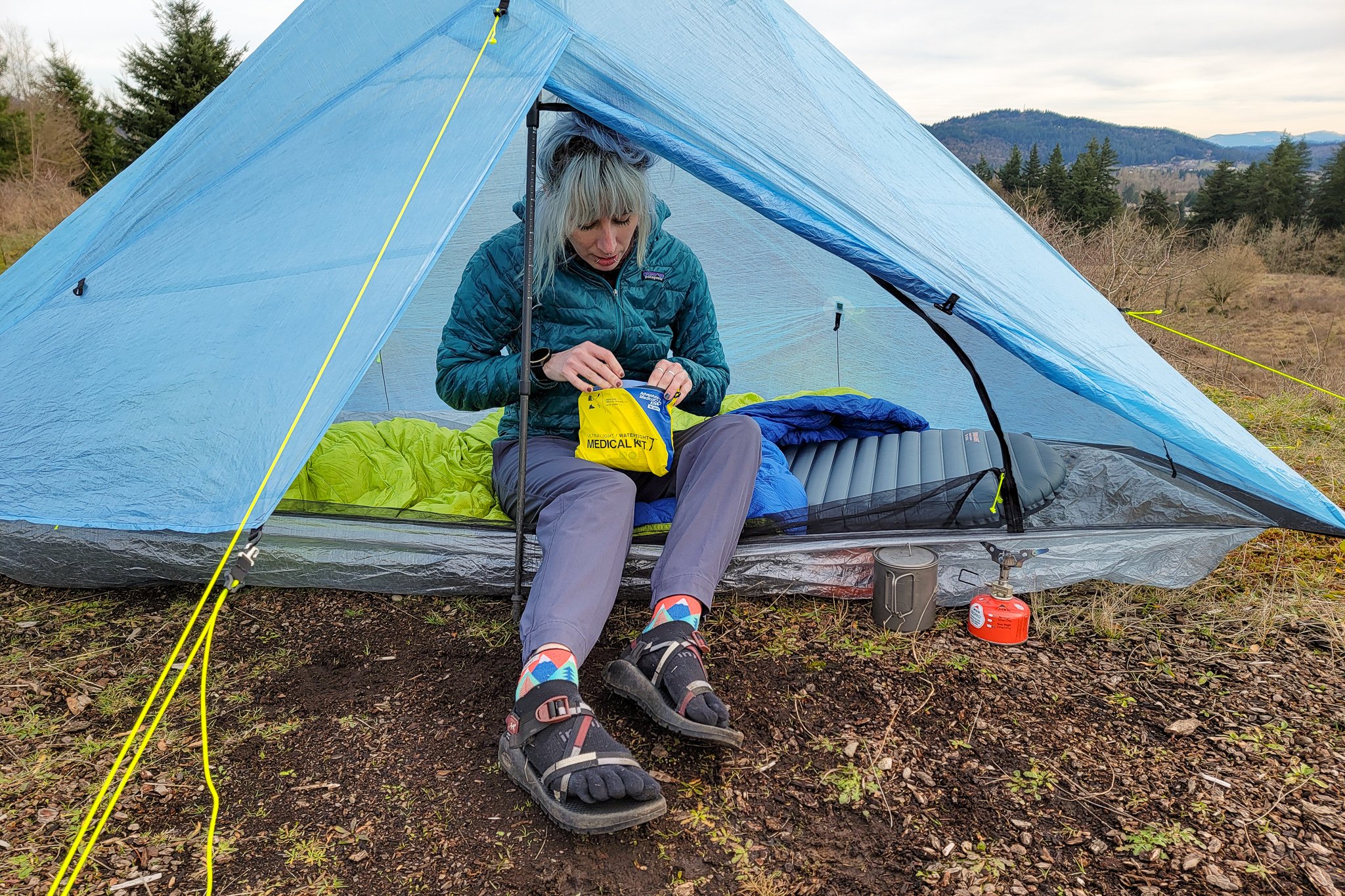
THE AMK ULTRALIGHT/WATERTIGHT IS ONE OF OUR FAVORITE KITS FOR BACKPACKING DUE TO IT’S BALANCE OF WEIGHT & PREPAREDNESS
ORGANIZATION – Good organization makes it quicker and easier to find what you need in a stressful situation. Clearly-labeled pockets also allow you to see what you need to re-stock after each trip. That said, organization features tend to add weight and bulk to a case by incorporating more zippers and elastic. Some find a simple pouch to be more convenient than one with multiple compartments. Whatever you choose, it’s important to be familiar with what you’re carrying.
- Most organized first aid kits: AMK Hiker, HART Extended, Surviveware Small & Welly Excursion
- First aid kits with basic organization: HART Day Hike & Welly Quick Fix
- Single-compartment first aid kits: AMK Ultralight/Watertight .7 & General Medi Mini
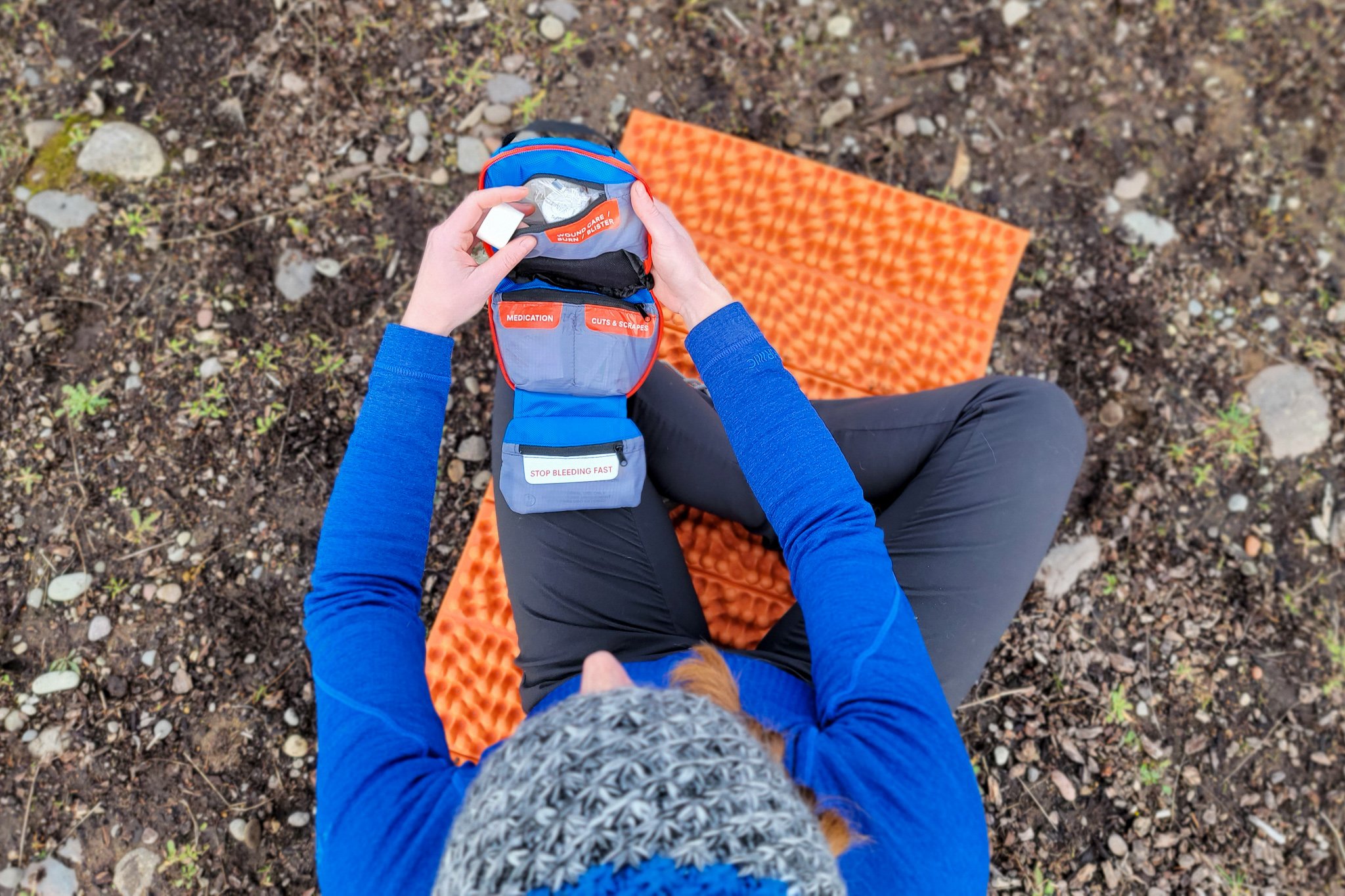
THE AMK HIKER KIT IS A TAD HEAVIER THAN SOME FIRST AID KITS, BUT IT HAS A GREAT ARRAY OF SUPPLIES & CONVENIENT ORGANIZATION
QUANTITY & VARIETY OF SUPPLIES – When looking for a first aid kit, you’ll need to decide whether you’re more interested in getting a greater variety of supplies to cover a wide range of situations or a larger quantity of the more basic stuff you’ll use the most. Eventually you’ll have to refill items in any kit you use, and you’ll likely want to customize it a bit. We recommend making a list of all the items you definitely want, then seeing which kit makes the best building block for you.
- Most comprehensive first aid kits: HART Extended & Surviveware Small
- Well-balanced first aid kits: AMK Ultralight/Watertight .7, AMK Hiker & General Medi Mini
- Most basic first aid kits: HART Day Hike, Welly Excursion & Quick Fix
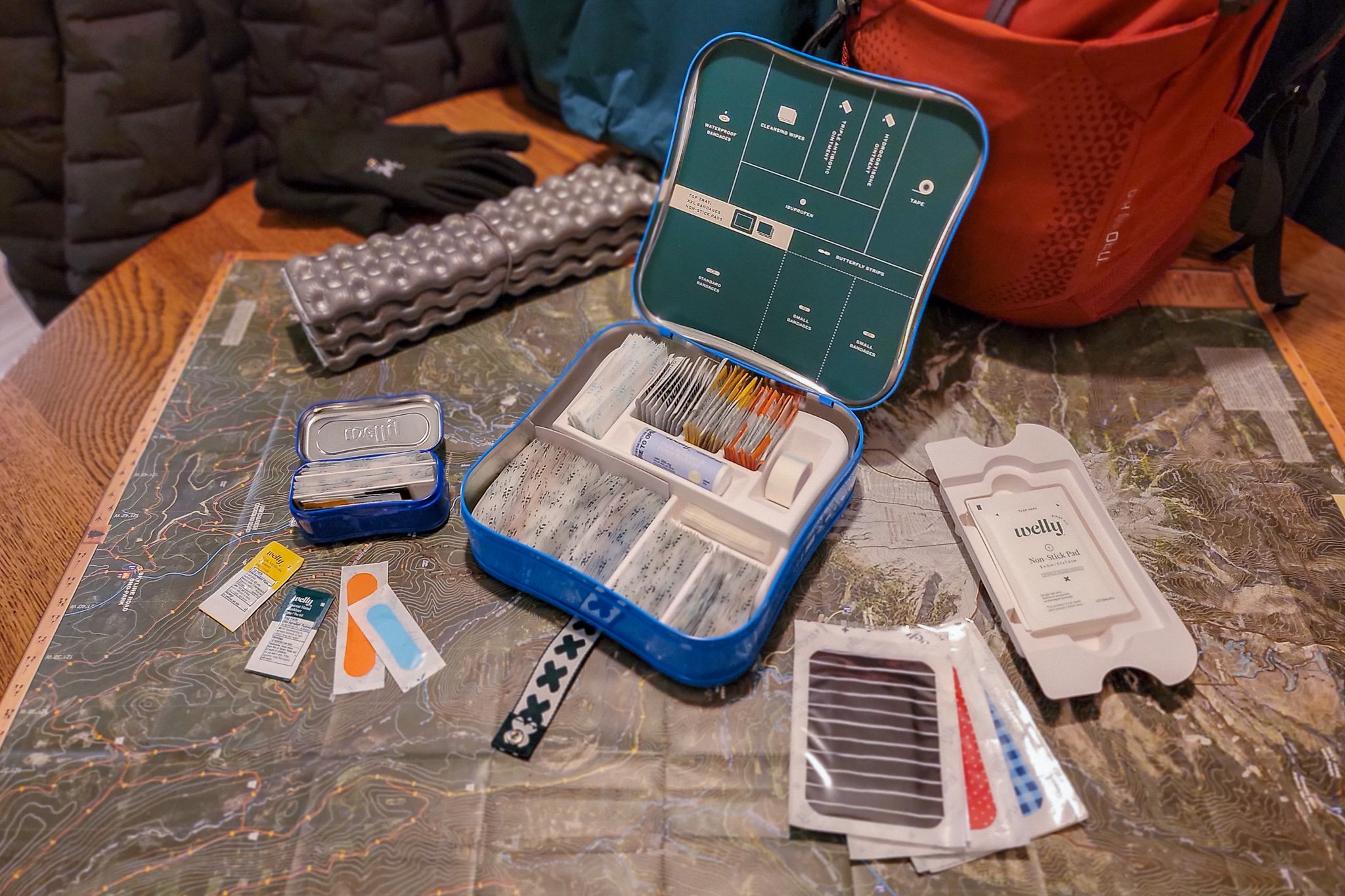
THE WELLY EXCURSION & QUICK FIX KITS HAVE AN EXCELLENT STOCK OF HIGH-QUALITY SUPPLIES TO TREAT COMMON CUTS & SCRAPES
Best First Aid Kits for Hiking of 2023
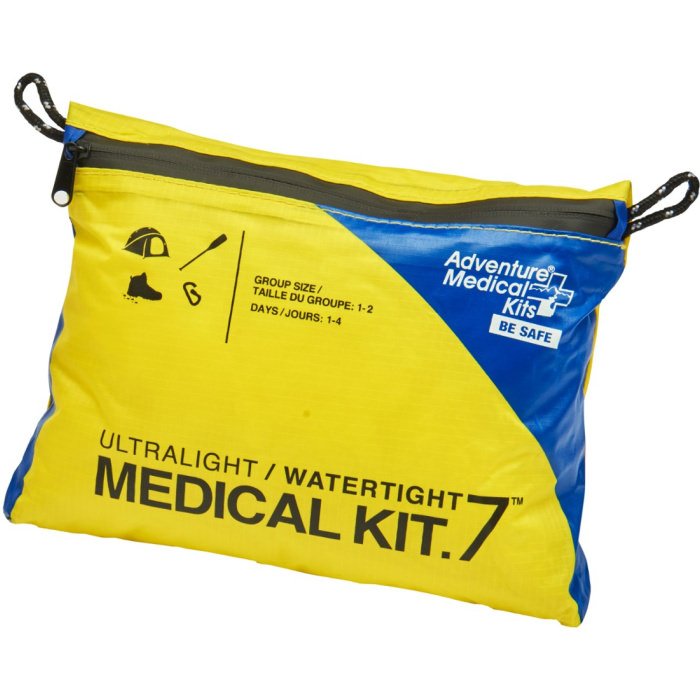
BEST FIRST AID KIT OVERALL FOR WEIGHT, PRICE & QUALITY
MSRP: $33
WEIGHT: 8 oz.
HIGHLIGHT INCLUSIONS: Elastic bandage, duct tape, benzoin tincture, Moleskin, butterfly bandages, tick/splinter remover
PROS: Lightweight, compact, affordable, weather-resistant case
CONS: Lacks organization, zippered case isn’t actually waterproof without resealable bag inside
BOTTOM LINE: The Adventure Medical Kits Ultralight/Watertight .7 is one of the most popular first aid kits among backpackers because it strikes an excellent balance of preparedness and minimalism. It has all the basics you’d expect and a few items you don’t see as often, like a compact roll of duct tape, Moleskin for blisters, and an elastic pressure bandage to treat common overuse injuries. The bag doesn’t offer much in the way of organization, so you may have to dump the contents to find what you need. That said, the Ultralight/Watertight contains pretty much everything we’d put in a custom DIY kit, but without the expense or work of buying all the supplies individually. It’s a great kit to start with and has plenty of room for customization. This kit is also available in bigger and smaller sizes.

MOST COMPACT FIRST AID KIT
MSRP: $15
WEIGHT: 4 oz.
HIGHLIGHT INCLUSIONS: Shears, splinter lancet, woven bandages, Moleskin, tape, meds
PROS: Affordable, ultralight, compact, well-organized
CONS: Small quantities of single-use supplies
BOTTOM LINE: The HART Day Hike Kit is so lightweight and compact that you’ll hardly notice it in your backpack. It’s not as complete as some of the bigger kits on our list, but it has all the basics to treat cuts and scrapes, blisters, stings, splinters, etc. Plus, a dose of each of the most important medications hikers commonly need, like painkillers and antihistamines. The case fits in the palm of your hand and has several convenient pockets to keep things organized. The Day Hike Kit is an excellent value, and it’s a perfect starter kit that you can customize to suit your needs for longer trips as well. HART also offers a selection of Refill Kits to make restocking easy and affordable.
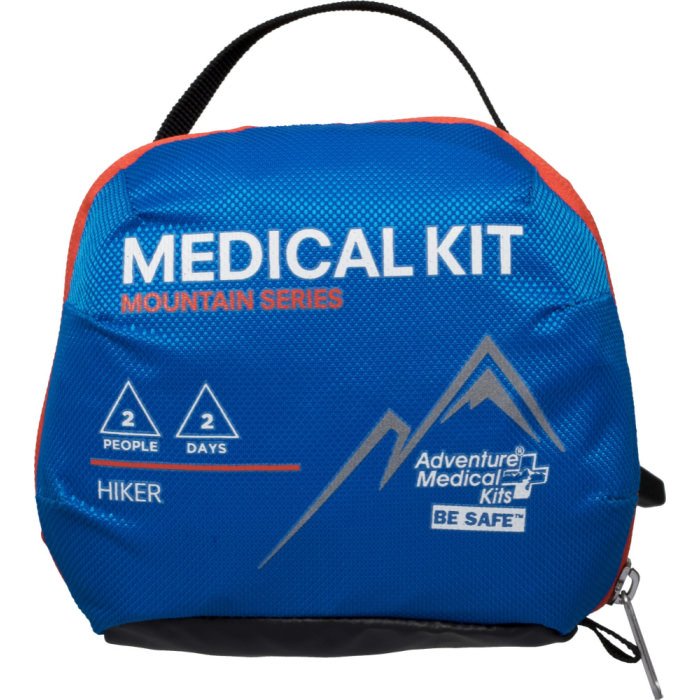
WELL-ROUNDED KIT WITH A THOROUGH FIRST AID GUIDEBOOK
MSRP: $30
WEIGHT: 7.2 oz. (not including 2.5 oz. first aid manual)
HIGHLIGHT INCLUSIONS: Butterfly bandages, Moleskin, tick/splinter remover, shears, Wilderness First Aid book
PROS: Affordable, lightweight, organized
CONS: A bit bulky, small quantities of single-use supplies
BOTTOM LINE: If you’re looking for a great balance of weight to preparedness, the Adventure Medical Kits Hiker is an excellent choice. It’s an awesome value and has a well-curated assortment of supplies in goldilocks quantities. We love the hangable, roll-out bag with labeled compartments as well. It makes it easy to find what you need and keeps supplies out of the dirt while you work. One unique thing about this kit is that it comes with a handy little first aid guidebook. It’s a great inclusion for learning, but you could leave it at home to save weight if you’ve already studied up on first aid protocol. We recommend the Day Hiker Kit to anyone who’s willing to carry a few more ounces to be well-prepared and neatly organized.
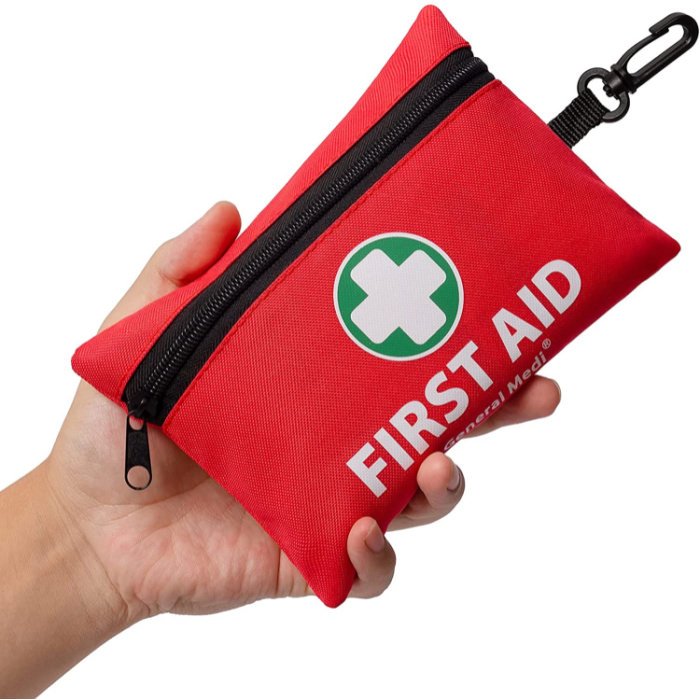
BEST BUDGET FIRST AID KIT
MSRP: $20
WEIGHT: 9 oz.
HIGHLIGHT INCLUSIONS: CPR mask, space blanket, triangular bandage, shears, tweezers, saline solution, tourniquet, brief first aid guide
PROS: Affordable, lightweight, large quantities of some supplies (can be used for refilling)
CONS: A bit bulkier than some, lacks organization, doesn’t include meds
BOTTOM LINE: The General Medi Mini is an incredibly affordable way to get you started on building your own personalized kit for the trail. It includes many of the basics you’ll need and some less-commonly seen items that you can pick and choose from. We recommend paring down the quantities of some supplies to reduce the weight and make room for additions like medications and your preferred athletic tape. If you take only what you need for the length of your trip, you’ll have plenty of extras to refill your kit when you get home. While you’ll have to spend a little more money to stock the General Medi Mini with commonly-used medications, you’ll be hard-pressed to find such an array of first aid kit supplies for less money.
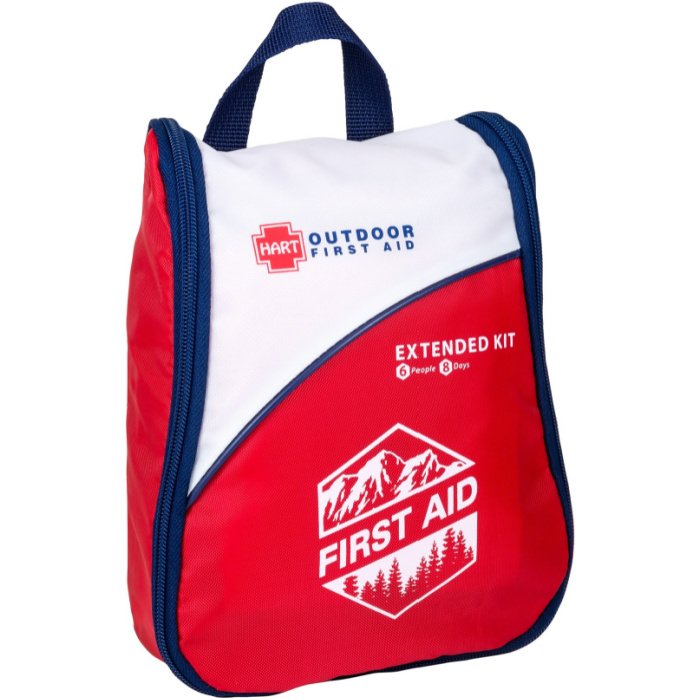
BEST FIRST AID KIT FOR GROUPS
MSRP: $58
WEIGHT: 1 lb. 4 oz. (with 3 oz. removable day hike kit)
HIGHLIGHT INCLUSIONS: First aid manual, pencil & incident recording cards, irrigation syringe, tweezers, shears, splint, pressure bandage, triangular bandage, electrolyte tabs, aloe vera gel
PROS: Comprehensive, well-organized, removable day trip kit, compact for the car or basecamp
CONS: Expensive, full kit is too heavy/bulky for hiking & backpacking
BOTTOM LINE: If you’re looking for a comprehensive first aid kit that can handle just about anything, we highly recommend the HART Extended Kit. It’s designed to treat a wide range of injuries and illnesses in the field, and the labeled organization and first aid manual make it great for amateur medics and experienced First Responders alike. The Extended Kit itself is a bit excessive to pack into the backcountry unless you’re attending to a large group on a long trip, but it’s a great compact size for basecamp. We love that it comes with a removable, wallet-size kit for day trips as well. The price is well worth paying for what you get in the Extended Kit, and it’s the one we take on our remote car-camping trips.

ORGANIZED & DURABLE FIRST AID KIT
MSRP: $60
WEIGHT: 1 lb. 1.4 oz.
HIGHLIGHT INCLUSIONS: CPR mask, wound closure strips, space blanket, shears, tweezers, triangular bandage, whistle, small bags for personal meds, basic first aid guide
PROS: Comprehensive, very well-organized, durable carrying case
CONS: A bit heavy & bulky, slightly expensive, no meds included
BOTTOM LINE: The Surviveware Small Kit is one of the most organized first aid kits we’ve seen, which makes finding what you need quick and easy in an emergency. The kit contains all the usual first aid items like bandaids and gauze, plus some less common upgrades like an elastic wrap, medical shears, and a CPR mask. While it doesn’t come stocked with medications, we appreciate that it does include small bags to add your own – which we often do anyway. The kit as a whole is pretty heavy/bulky for backpacking, but it’s a great size for camping. But you could easily pare it down a bit to save weight by removing items you don’t expect to use. Overall we’re really impressed with the quality of the Surviveware Small Kit, and it’s a great building block for anyone starting from scratch.
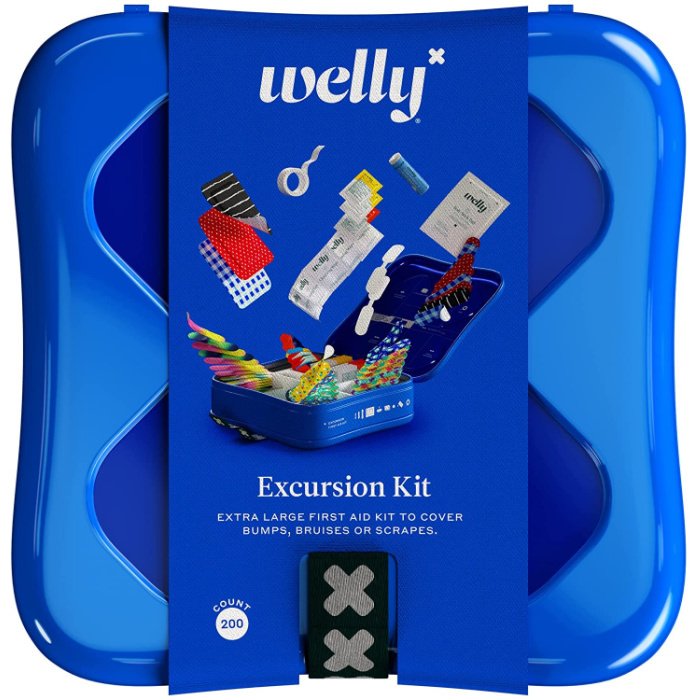
HIGH-QUALITY CUT & SCRAPE KITS FOR EVERYDAY USE
MSRP: $40 Excursion / $8 Quick Fix
WEIGHT: 1 lb. 4.1 oz. Excursion / 2.4 Quick Fix
HIGHLIGHT INCLUSIONS: High-quality fabric & waterproof bandages, butterfly closures, triple antibiotic ointment, hand sanitizer
PROS: Quick Fix is very light, compact, & affordable; Excursion Kit is organized & has generous quantities of supplies, both come in durable & stylish tins
CONS: Excursion kit is too heavy/bulky for hiking & backpacking, basic (mostly intended to treat minor cuts & scrapes), not much room to add personal items
BOTTOM LINE: If cuts and scrapes are a regular occurrence in your rambunctious family and you’re looking for more of a basic boo-boo kit for everyday use, you’ll love the Welly Excursion and Quick Fix Kits. Both kits feature stylish and colorful fabric bandages that have great holding power as well as triple antibiotic ointment and hand sanitizer packets. The Quick Fix is a small travel kit you can toss in your bag and forget, while the Excursion Kit is larger and great for basecamp, home, or the car. It’s by no means comprehensive for serious medical emergencies, but it’s beautifully organized and comes equipped with an array of fabric and waterproof bandages, butterfly strips, cleansing wipes, hydrocortisone cream, non-stick pads, tape, and ibuprofen – the stuff that tends to get used the most. It’s hard not to love these kits for their charm and the Excursion is an excellent restock supply for any hiking or backpacking kit.
Custom DIY First Aid Kit

BUILD YOUR OWN
PROS: Fully customizable, includes resupply stock, likely ultralight/compact
CONS: Can be expensive, likely lacks organization, time-consuming
BOTTOM LINE: Many backpackers and thru-hikers opt to build their own first aid kit because a homemade kit will generally be lighter and more compact than one you can buy commercially. Going this route allows you to choose the quality and quantity of each item and pick your own case, which can range from a Ziploc to an ultralight stuff sack or waterproof toiletry bag. The biggest downside to the DIY method is how expensive it can be. That’s why we often recommend starting with one of the kits above and customizing it. Even if you buy generic, the cost of medications, bandages, and other supplies in relatively large quantities adds up quickly. Of course, you probably already have some of these items around and you’ll have plenty of extra supplies to refill your kit after trips. If you’re willing to do some work and don’t mind spending more on inventory initially, a DIY kit may ultimately be the best value in the long run.

Some hikers choose to build their own first aid kit – this can be a great option, but it’s usually more expensive initially
BUILD-YOUR-OWN KIT SUPPLY LIST
Here are some of the items you’ll find in our custom-built first aid kits in minimal quantities (exact items & amounts adjusted for each trip based on environment and number of days):
Personal Care
- Case: Ziploc, HMG Small Stuff Sack, Nite Ize Runoff Pouch
- 1 oz. Hand Sanitizer – can also be used for toilet kit
- Swiss Army Classic– small scissors, knife, tweezers, nail file, & toothpick
- Eye Drops – for the dreaded blowing sand
- Lip Balm – to prevent sunburn and chapping, can also use to lubricate chafing
- Water Purification Tabs – emergency backup for water filter
Medications
- Pill Bags or Container – container keeps pills from getting crushed
- Ibuprofen – pain reliever
- Benadryl – for allergic reactions
- Imodium – for diarrhea
- Laxative Tea – for constipation due to travel/trail food
- Electrolyte Packets – for dehydration, shock, etc.
- Prescription Rx
- Sleep Aids & Ear Plugs – if you have trouble sleeping away from home
Sprains & Strains
- KT Tape – for preventing overuse injuries, sprains/strains & blister care
- Elastic Bandage, Strap, or Sleeve – if you have a history of tendonitis, knee pain, plantar fasciitis, etc.
- Large Safety Pin – to improvise a sling, pin wet socks to outside of pack, etc.
Wound & Blister Care
- Fabric Bandages
- Butterly Bandages or Steri-Strips
- Mini Krazy Glue – for repairs and closing small wounds on fingers/toes
- Needle & thread/floss (in a film canister) – for repairs or to create a wick to drain blisters
- Triple Antibiotic Ointment – to prevent infection of blisters, cuts & scrapes
- Gauze Pads – to create a bandage for larger wounds
- Sterile Alcohol Prep Pads – to sterilize hands, wounds, tools, etc.
- Disposable Gloves – for body substance isolation/clean hands for first aid
- Medical Tape (if you don’t carry KT Tape)
Want to learn more about building your own first aid kit and how to keep your backpacking gear ultralight? Check out our tutorial video: Essential Items & First Aid Kits.
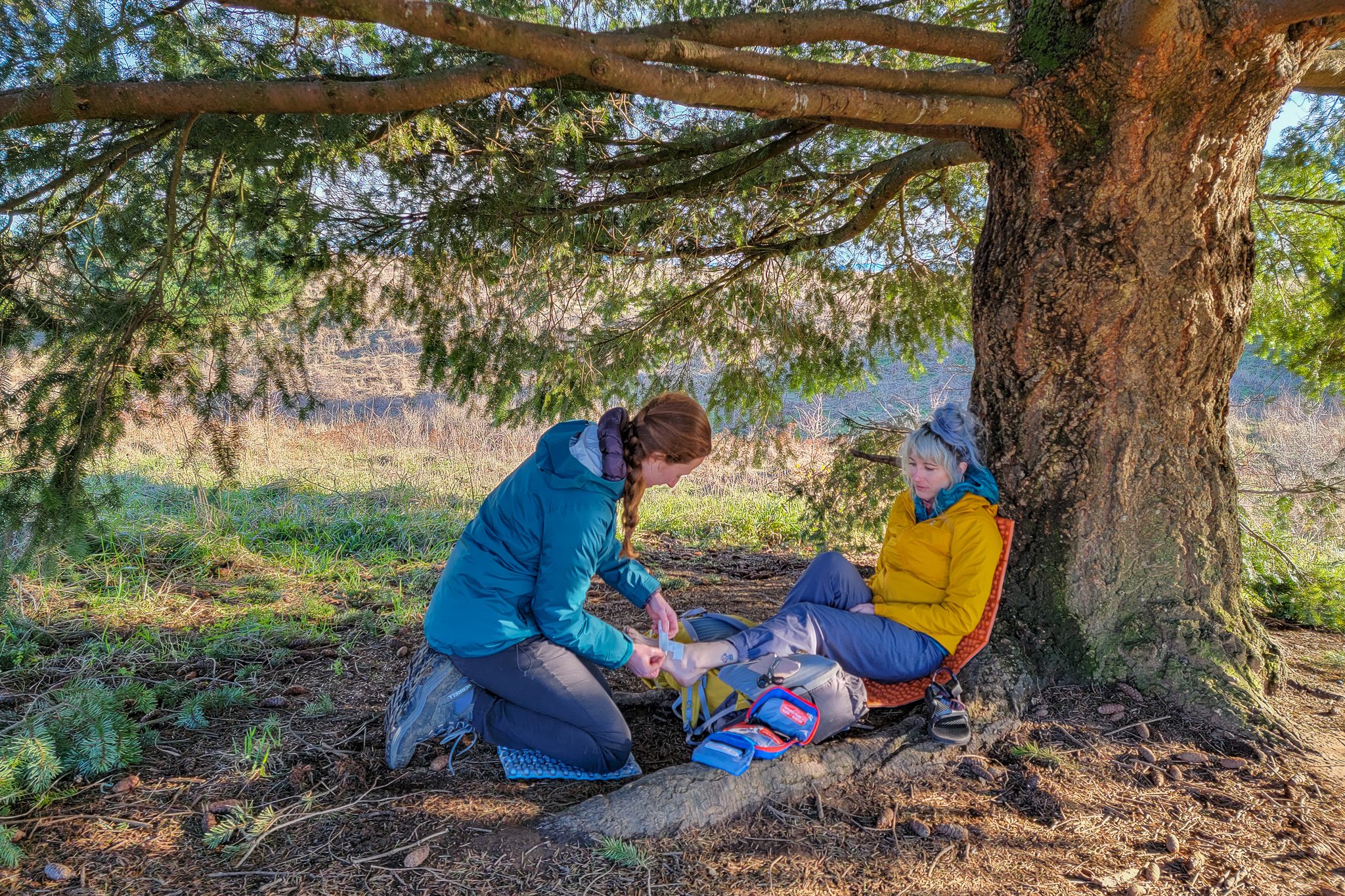
THE AMK HIKER FIRST AID KIT COMES EQUIPPED WITH A WIDE RANGE OF TOOLS & SUPPLIES, PLUS A WILDERNESS FIRST AID BOOK
Honorable Mentions
The following first aid kits didn’t make our final list, but they still have a lot of good things going for them. You never know, one of these might be perfect for you:
- BlisterPod Ultra – an expensive, but very professional kit full of blister-specific supplies
- AMK ADS Trail Dog – a dog-specific first aid kit for your hiking companion
- I Go First Aid Kit Ultralight – a budget-friendly starter kit; we ultimately prefer the General Medi Mini which offers more refill supplies for even less

THE SURVIVEWARE SMALL FIRST AID KIT IS PRETTY DARN COMPREHENSIVE, BUT YOU’LL NEED TO ADD MEDICATIONS TO COMPLETE THE SET
Critical Considerations
FIRST AID TRAINING – The most important thing you can carry into the wilderness is the knowledge of what to do in a variety of emergency situations. If your first aid skills are rusty, brush up with some online training. To start, watch our Emergency First Aid Skills for the Backcountry video. You may also want to consider taking an outdoor sports-focused first aid course. These classes can be a lot of fun and the skills you learn can ultimately mean the difference between life and death in an emergency situation.
- Wilderness First Aid (WFA) – a two-day introduction to wilderness medicine offered by REI, NOLS, Red Cross, Mazamas, as well as local colleges
- Wilderness First Responder (WFR) – a more in-depth (and more expensive) class that will land you a certification – also offered by REI and NOLS. This is the one usually required for professional guides and trip leaders.
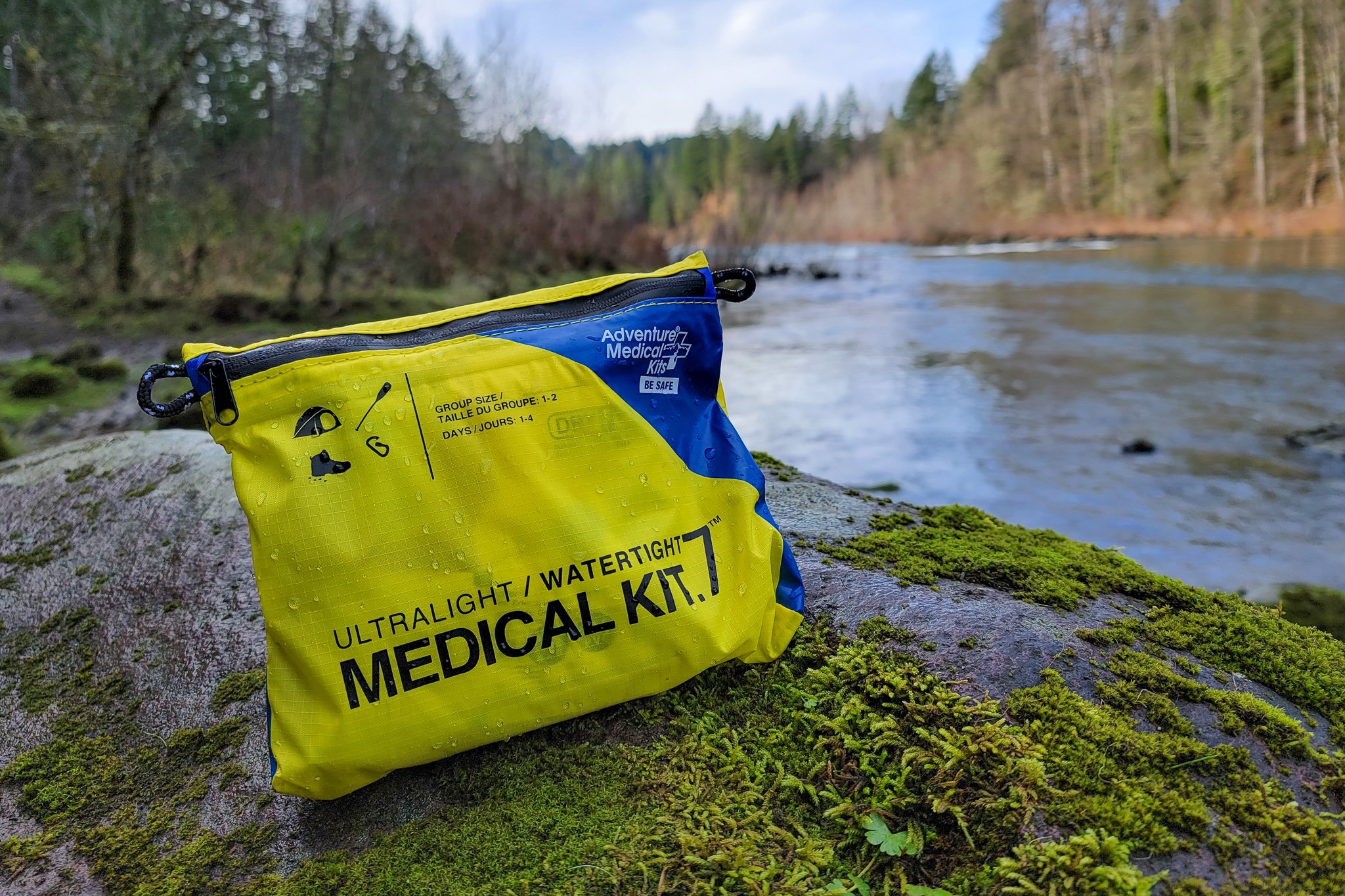
TO ENSURE THE AMK ULTRALIGHT/WATERTIGHT .7 IS WATERPROOF, CAREFULLY CLOSE THE RESEALABLE BAG INSIDE AFTER EACH USE
BLISTER CARE – One of the most common problems hikers and backpackers experience are blisters. They may be small, but they can easily be painful enough to end your trip. We highly recommend reading our post on How to Prevent and Treat Blisters While Hiking and checking your first aid kit’s inventory carefully to make sure you have what you need to treat them properly before heading out on your next adventure.

KNOWING HOW TO PREVENT & TREAT BLISTERS WHILE HIKING IS AN IMPORTANT BASIC FIRST AID SKILL TO MASTER
OVERUSE INJURIES – If you’re planning a thru-hike or intend to cover lots of miles quickly, it’s worth your while to learn as much as you can about common hiking overuse injuries and how to avoid them. Repetitive and excessive movement on the trail without time to properly heal can cause micro-injuries to your tendons, bones, and joints. About half of thru-hikers report having to stop or slow down during their trek due to nagging pain or an injury to their feet, ankle, knee, or leg. In a nutshell, it’s important to train, build up to big-mile days slowly, choose your footwear wisely, and consider using trekking poles. KT Tape is also a serious game changer if you need to treat a sprain or strain in the backcountry.
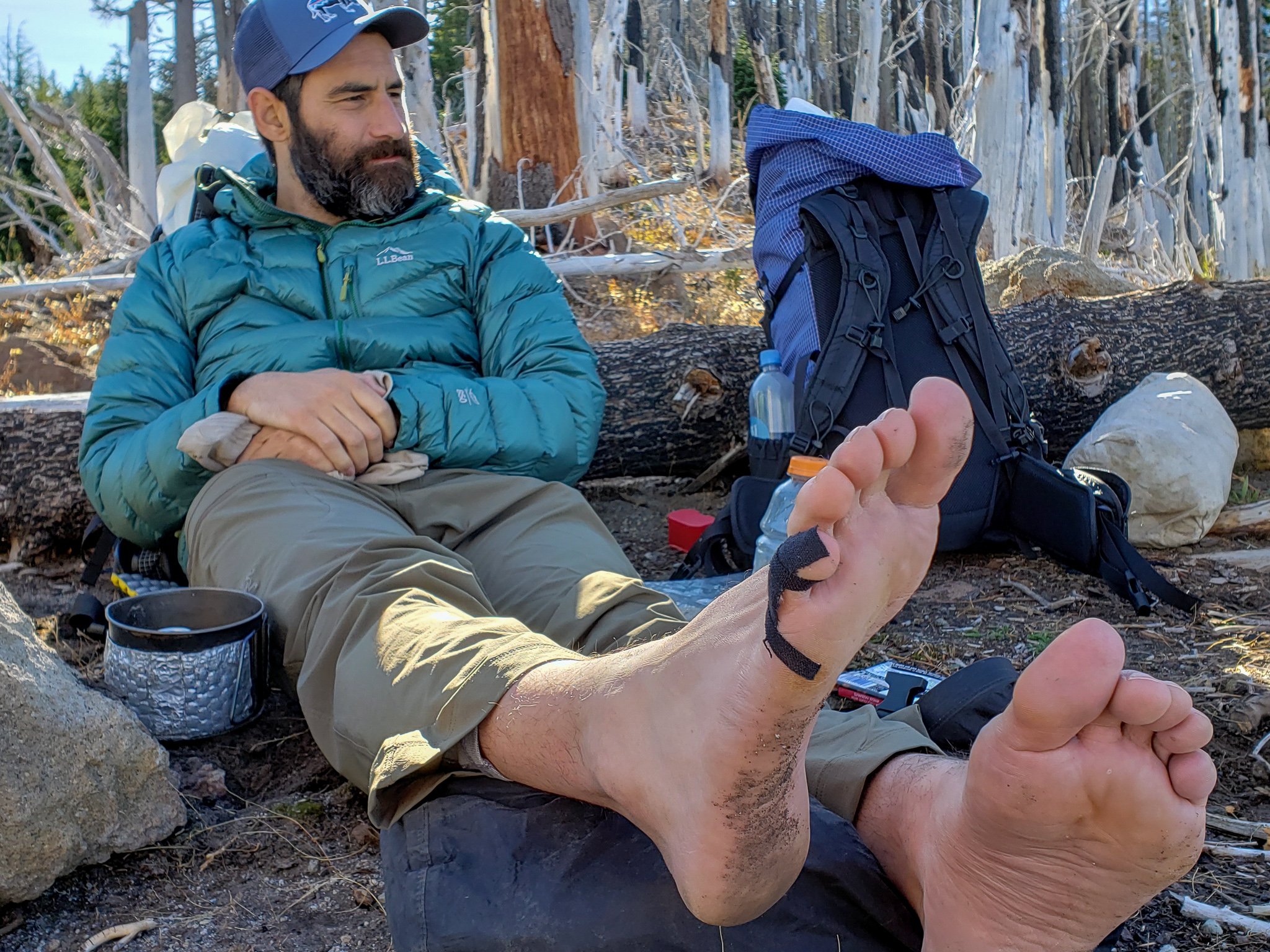
KT TAPE IS BREATHABLE, STRETCHY & HAS A+ HOLDING POWER SO IT’S GREAT FOR TREATING A VARIETY OF COMMON TRAIL INJURIES
GROUP SIZE & LENGTH OF TRIP – A lot of first aid kits are marked with an estimate of the number of people and number of days it will serve. Kits for bigger groups will generally have more single-use supplies, like bandages and meds. Things like tweezers, shears, or splints remain fairly consistent from kit to kit.We don’t find this metric particularly useful since actual results vary wildly in real-life. Instead, we create our own estimates based on experience and our personal needs. We always take a base amount of 1-2 doses of each medication, plus a bit more of anything we know we’re likely to use daily (like ibuprofen or sleep aids). For things like bandages, use your best judgment while thinking about maintaining a balance of preparedness and weight.

THE AMK ULTRALIGHT/WATERTIGHT .7 IS ALSO AVAILABLE IN BIGGER AND SMALLER SIZES
ENVIRONMENTAL HAZARDS – You won’t need the same stuff in your first aid kit for every trip. It’s really important to think about the specific environment you’ll be in so you can add and subtract items from your kit accordingly. The basics remain the same, but the hazards you’ll come across on a snowshoeing trip are different from those you might encounter while backpacking in the desert. For example, it’s helpful to pack tweezers in tick country, tape to extract cactus spines in the desert, and extra supplies for blister prevention on routes with lots of wet or sandy terrain.

PACK FOR YOUR ENVIRONMENT, FOR EXAMPLE; BRING TWEEZERS & TAPE TO EXTRACT CACTUS SPINES WHILE BACKPACKING IN THE DESERT
REFILLING YOUR KIT – It’s really important to be diligent about keeping up your first aid kit’s inventory to ensure its effectiveness in an emergency. Check through your kit before each trip (it might be helpful to print a list), and make it a habit to restock it as soon as you get back. You can refill your kit from your household stock or buy a refill kit from the list below.
- Adventure Medical Kits Refills: Medications, Burn Tx, Antiseptics & Ice Pack
- HART Refill Kits
- General Medi Refill Kit
- Medications Unit Dose Pack – individually wrapped doses of commonly used meds
- Be Smart Get Prepared 326 – a large first aid kit for restocking your travel kit

THE HART DAY HIKE KIT IS SO LIGHTWEIGHT AND COMPACT THAT YOU’LL HARDLY NOTICE IT IN YOUR BACKPACK
Need More Gear Advice?
If you liked this list, you’ll love the CleverHiker Gear Guide where we test and recommend tons of outdoor adventure gear from a variety of categories. here are some links to popular articles:

WE LIKE TO INCLUDE THE ULTRALIGHT SWISS ARMY CLASSIC IN OUR FIRST AID KIT FOR THE SCISSORS, KNIFE & TWEEZERS
Why Trust Us?
We fully understand how tough it is to find trustworthy gear advice, and that’s one of the main reasons we built CleverHiker. We live for outdoor adventure, and we take these guides very seriously. Here are some of the reasons you can trust us:
- Our choices are completely independent and based on personal experience.
- We’ve logged over 10,000 trail miles and test outdoor gear for a living.
- We own and field test every product we recommend, which is sadly not the norm.
- We travel to industry trade shows to learn about upcoming product innovations.
- We constantly update our guides when new products launch.
- We treat our recommendations as if they were for our family and friends.
- We’re lifelong learners and we’re always open to constructive criticism. If you think we’ve missed a product or got something wrong, we’d love to hear your feedback.
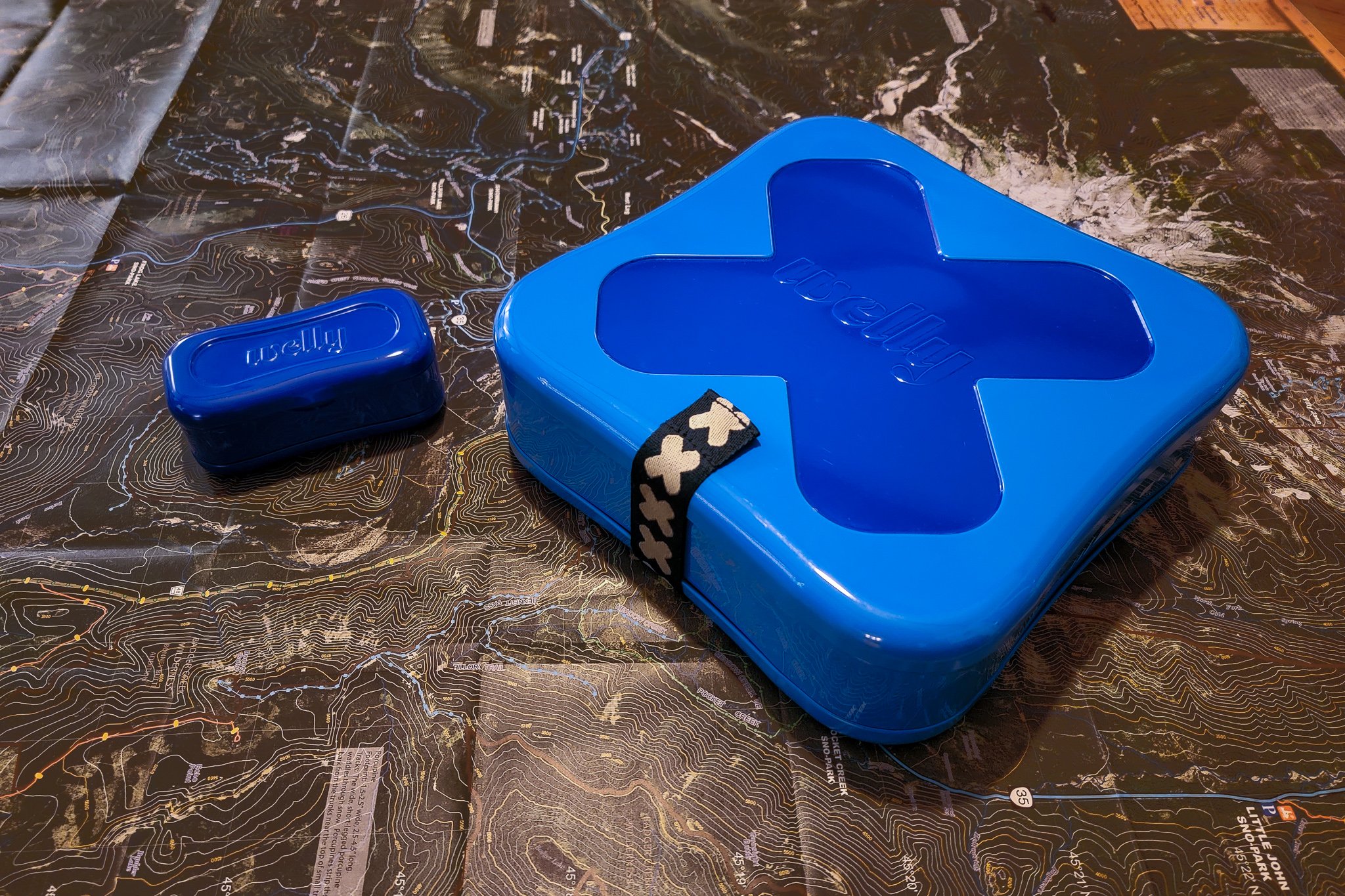
THE WELLY EXCURSION & QUICK FIX KITS FEATURE STYLISH & COLORFUL BANDAGES AS WELL AS OTHER COMMONLY-USED SUPPLIES
More Information
We hope this guide helps you find the perfect gear for your needs. If you have more questions or a suggestion, we’d love to hear from you! Sign up for our newsletter to stay updated on our latest posts then visit our Facebook page and Instagram to join the community conversation.
If you found this guide helpful, please give it a share on social media! Also, be sure to check out our CleverHiker Gear Guide to see all of our top gear picks.
Thanks for reading and happy trails!
Some of the links on this page are affiliate links, which means we may receive a modest commission if purchases are made through those links. This adds no cost to our readers and helps us keep our site up and running. Our reputation is our most important asset, which is why we only provide completely honest and unbiased recommendations.
